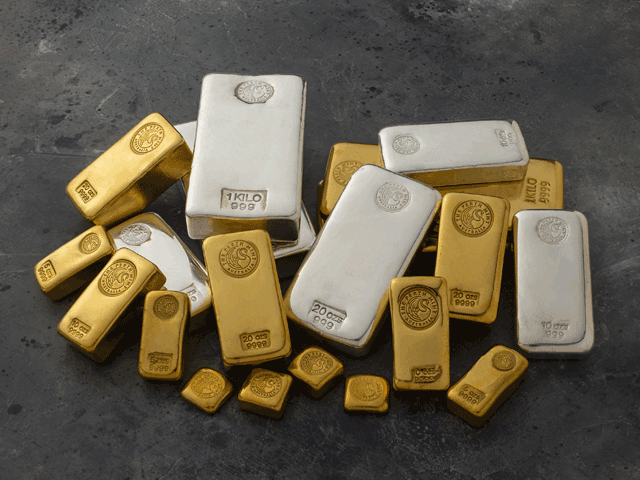What is gold to silver ratio trading?

The gold to silver price ratio has continued to rise over the past year from an already high 86 to 1, to 112 to 1. In this article we discuss what the gold to silver ratio is and why it’s an important consideration for some precious metal investors.
The gold to silver price ratio is a measure of how many ounces of silver are required to buy an ounce of gold.
For a long period of human history both were monetary metals and the ratio was generally fixed. Today, however, the ratio floats – reflecting market forces that determine the gold and silver price.
The average gold to silver ratio during the 20th century (in USD) was 47 to 1. Over the past 20 years the average has been nearer to 60 to 1.
For some hard assets enthusiasts, the gold to silver ratio is the basis of their precious metal trading strategy. In particular, they are interested in times when the ratio fluctuates widely from the prevailing norm.
The theory is that a high ratio signals it could be time to favour silver – which appears relatively cheap by historical standards.
Conversely, a low ratio may mean it could be a good time to purchase gold.
This time last year we noted that at 86 to 1, the gold to silver ratio was well above its 10-year average of around 66 to 1. It meant 86oz of silver were needed to buy 1oz of gold - an abnormally high level that could have been interpreted as a powerful trading signal.
In the past year, the gold to silver price ratio has spiked even higher, and currently sits around 112 to 1.
It should not be forgotten that silver, by comparison to gold, can be highly volatile. As Investopedia states: the price of silver swings between its perceived role as a store of value and its role as an industrial metal.
During the emergence of the Covid-19 crisis, silver, alongside many other industrial commodities suffered significant selling pressure that saw the price fall to its lowest level in more than a decade.
Behind this price movement lies the fear of a global economic recession and a reduction in commercial and consumer demand for silver. Considering that every computer, mobile phone, vehicle and a countless number of other electrical appliances – including many solar energy panels – contains silver, it’s easy to understand how this fear may be realised.
Gold on the other hand increased in value, rallying as a safe haven asset amid tumbling equity markets. With silver performing poorly relative to gold during this period, the gold to silver ratio briefly touched an all-time high of 127 in mid-March.
Right now, the price of silver is languishing at under USD 15 per ounce, way below its record of USD 49.50, reached in April 2011. In its recently released World Silver Report, however, The Silver Institute said it remained constructive towards the silver price during the rest of 2020.
“We expect physical investment to enjoy strong growth. Importantly, we also believe that professional investor interest in silver will also improve considerably in the months to come, as confidence that gold is once again in a sustainable bull market grows and silver’s historical undervaluation makes it look yet more attractive.”
In a follow-up interview with Kitco, Phillip Newman, director of Metals Focus, the precious metal consultancy behind The Silver Institute report, said that investor demand for silver could push prices to USD 19 an ounce this year.
One of the key indicators he is watching is speculative interest in the metal. According to data from the Commodity Futures Trading Commission, net-bullish positioning in silver is at its lowest level in a year. This suggests “there is significant room for speculative investment to come back into the market,” he said.
If this scenario were to come true, Metals Focus’ price target represents a more than 26% gain in silver from current prices.
Given this analysis and the extremely high gold to silver ratio, there’s no doubt many investors interested in ratio trading will be eyeing the prospect of buying into silver. While nothing is assured, it is useful to be aware of the ratio when researching the many factors likely to affect precious metal prices.
DISCLAIMER
Past performance does not guarantee future results. The information in this article and the links provided are for general information only and should not be taken as constituting professional advice from The Perth Mint. The Perth Mint is not a financial adviser. You should consider seeking independent financial advice to check how the information in this article relates to your unique circumstances. All data, including prices, quotes, valuations and statistics included have been obtained from sources The Perth Mint deems to be reliable, but we do not guarantee their accuracy or completeness. The Perth Mint is not liable for any loss caused, whether due to negligence or otherwise, arising from the use of, or reliance on, the information provided directly or indirectly, by use of this article.











